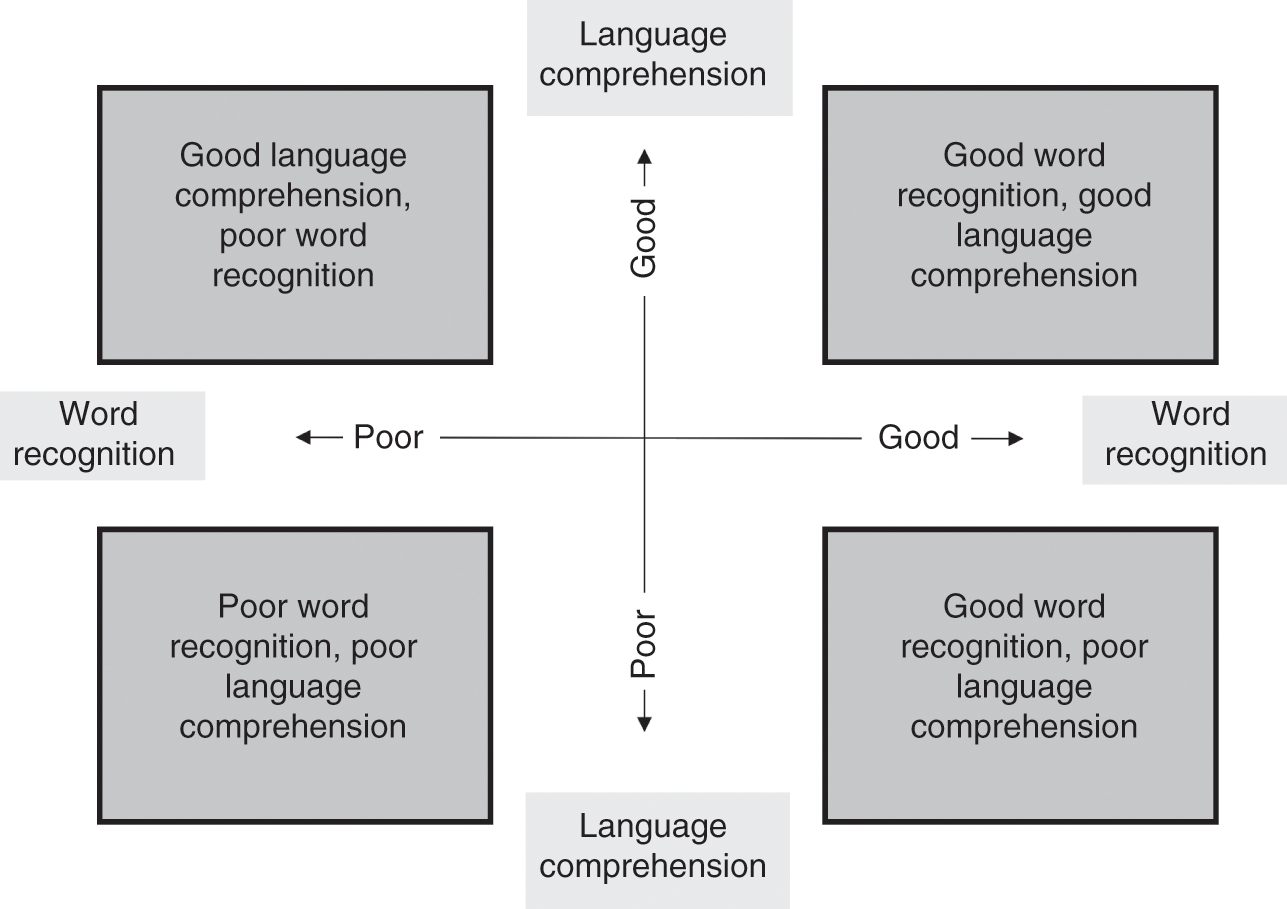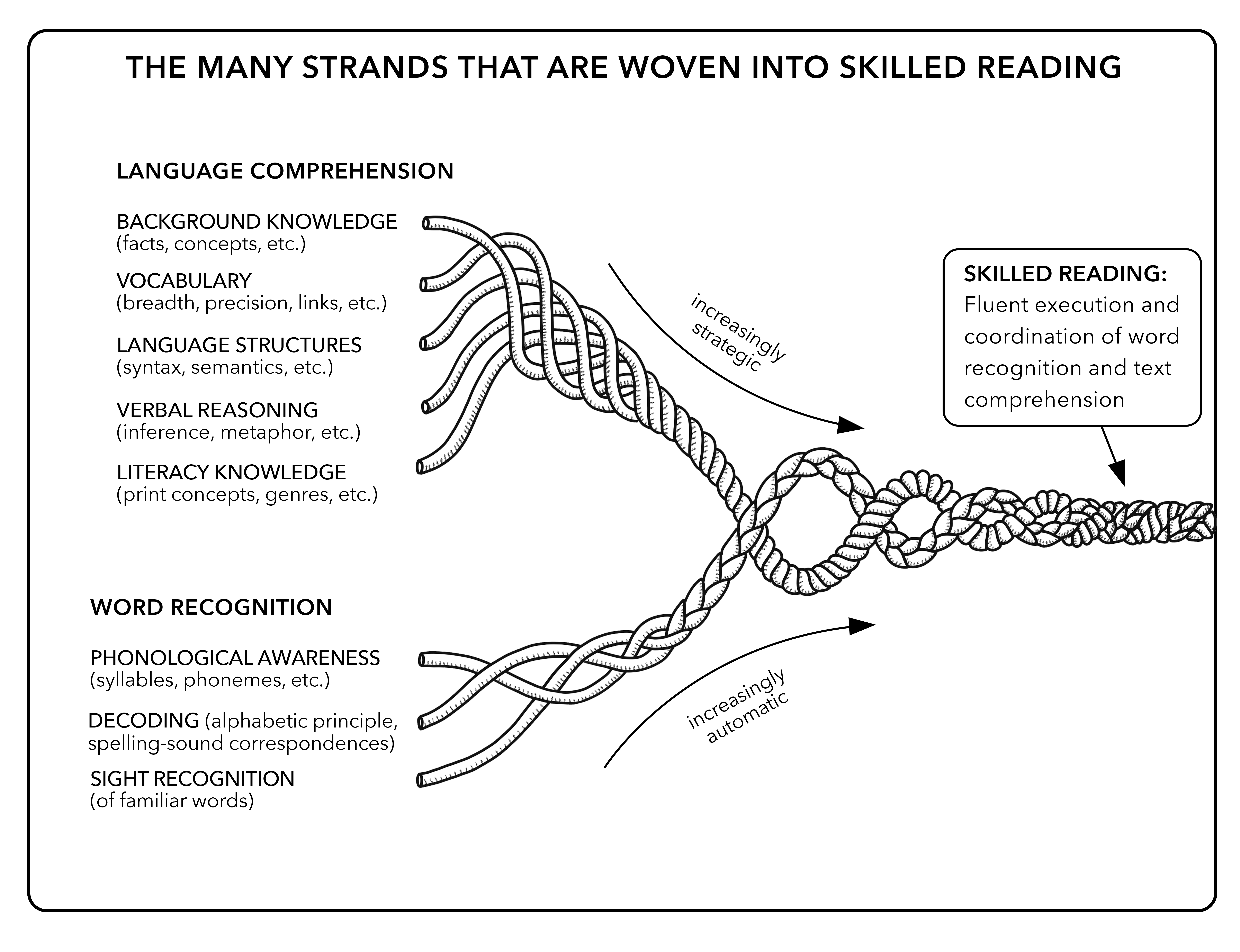To understand why quality text is important, it is helpful to first explore Ohio's Plan to Raise Literacy Achievement and the Science of Reading.
Ohio's Plan to Raise Literacy Achievement "articulates a state literacy framework aimed at promoting proficiency in reading, writing and communication for all learners." The plan focuses on Ohio's vision to strengthen literacy efforts through the implementation of scientific research. The "data-based, differentiated and evidence-based practices" are part of the Science of Reading, scientific reading instruction grounded in using cognitive science and educational outcomes. Based on 40 years of research in various fields, the Science of Reading provides educators with evidence-based practices and resources to support reading development for each learner.
To understand the importance of using quality text in the classroom, it will be helpful to learn more about the Science of Reading.
One of the tools needed to support this vision is the Simple View of Reading. It serves as a guide for understanding and development of reading instruction. The theoretical model shows us how children learn to read. The Simple View of Reading is an equation illustrating the skills needed for building a reading brain.
Decoding x Language = Reading Comprehension
The equation is based on the premise that both elements are essential to learning to read. Without decoding (word recognition) or language (listening or linguistic comprehension), the equation produces a negative result. In other words, if children can't decode, they won't be able to read. Similarly, if the skills of language comprehension is absent, reading is difficult. The chart from Cambridge University illustrates this.

There are many subskills associated with decoding and language comprehension. These skills are essential for the development of reading and become integrated as reading skills develop. Scarborough's Rope expands the Simple View of Reading and is a visual metaphor comparing the many reading skills woven as strands into a rope, creating a skilled reader. The following image is from the Arizona Department of Education.

Watch this video from the Ohio Department of Education and Workforce to learn more about these key components of literacy instruction.
For additional information about the Science of Reading, explore these resources:
Pause after watching the video and reading the Science of Reading whitepaper from Zaner Bloser.
What are the three most important take-aways for you about the Science of Reading and how it applies to instruction?
The development of the subskills in Scarborough's Rope is essential for reading comprehension. Each child will benefit from an instructional approach that systematically and explicitly teaches these skills to support the creation of the neural routes needed for reading proficiently. Structured literacy instruction is an approach that provides a strong foundation in the skills, with an emphasis on phonological awareness, phonics, phonemic awareness, and practice in decodable texts in early grades, and on vocabulary, morpheme awareness, and syntax instruction as students progress.
To learn more about Structured Literacy, including its importance in the instruction of students with dyslexia, explore these resources:
Structured Literacy—The Rhode Island Department of Education has compiled supporting resources for the key skills addressed on this website.
Structured Literacy and Typical Literacy Practices: Understanding Differences to Create Instructional Opportunities—This article from Teaching Exceptional Children compares the features of Structured Literacy with Typical Literacy Practices such as Guided Reading and Reader's Workshop.
User Guide for Sample Reading Lessons—The National Center for Intensive Intervention provides sample lessons and this user guide for those interested in integrating Structured Literacy into schools and classrooms.
From Scarborough's Rope and the additional resources provided it is evident there are many skills that require not only text but text to provide opportunities to develop the neural pathways of the reading brain. Quality text is essential for building readers who are able to comprehend text independently while in school and beyond. Vocabulary, background knowledge, sentence structure (syntax), and figurative language are textual elements that contribute to skilled reading where the reader is able to recognize words and comprehend text meaning that is increasingly strategic and automatic.
Think about a text you use regularly for instruction. In the High-Quality Instructional Materials for Each Child Open Space group, write a description of this text in the Text I Use in Instruction post in the Discussion tab. Condsider the following questions to help you explain your text.
Fetch is avaiable to INFOhio automated schools. If you are an INFOhio school, please log in with your school username/password using the button at the top-left corner of this page.
For more information about Fetch, please visit the Fetch information page or contact INFOhio support at https://support.infohio.org.